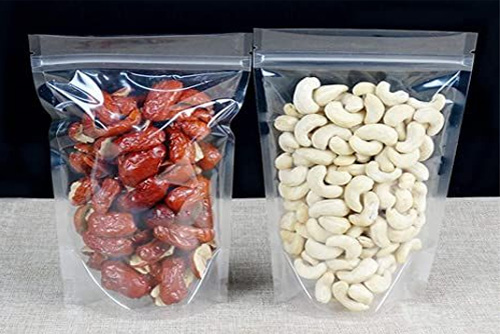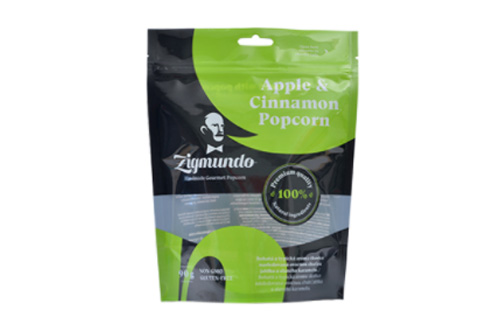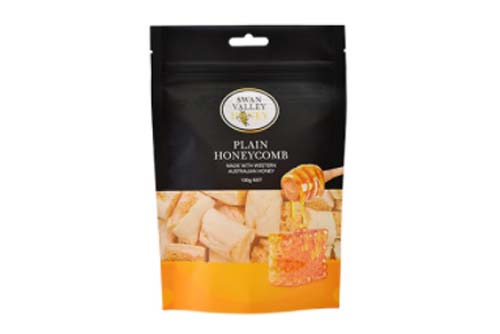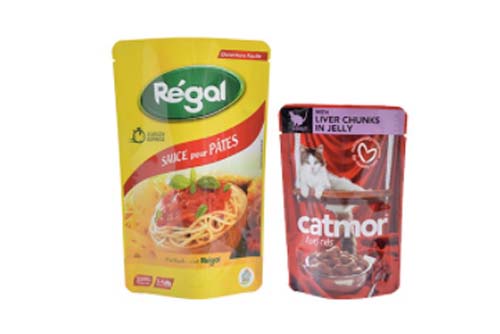
One of the core design aspects of stand-up pouches is delivering a high barrier for product preservation. The barrier is also supposed to keep the product from leaking while the pouch is being handled or is in transit. As such, it is safe to say that a stand-up pouch is only as good as its sealing.
There are different ways to seal a stand-up pouch. It all comes down to what is in the bag, the available machinery, and the material of the pouch. Below we look at some of these sealing methods as well as their pros, cons, and how to choose the right one.
Table of Contents
Heat Sealing
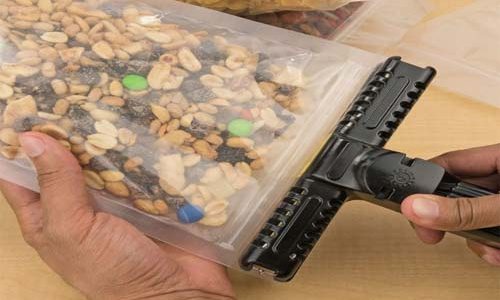
Source: Amazon
Heat sealing is arguably the most common method used to seal stand-up pouches. It is used in multiple stages too. The first is during the bonding of the multiple layers of stand-up pouches. The second is when the pouch is filled with product and its main opening needs to be sealed to keep the product safe.
The concept of heat sealing involves the application of heat on the surface where a stand-up pouch is to be sealed. This causes the two layers of material on either side of the opening of the pouch to slightly melt and bond. The bonding of the layers is done under controlled temperatures which do not damage the appearance or performance of the stand-up pouch. There are also no chemicals added during the process.
There are, however, different types of heat sealing. They include:
Direct heat sealing- in this method, the heat sealing machine produces a consistent high temperature at its jaws to seal the pouch. It is suitable for sealing stand-up pouches made of laminated Kraft paper and other similar thick material combinations that need high heat to form a heat seal.
Impulse heat sealing- this method gets its name from the type of heat sequence it uses to seal pouches and other items. An impulse heat sealing machine first warms the pouch surface up and then suddenly increases the temperature to a higher level for a brief period. It then cools down and brings the temperature of the sealing area down too. It is ideal for light materials like PE and PP plastics that do not have to be subjected to very high heat to achieve a seal.
Hand-held heat sealing method- this is an on-the-go heat sealing method that uses a hand-held heat sealer. It is highly convenient for small stand-up pouches or small batches of products. Further, given as they are handheld, they would not be ideal for seals that require high temperature.
PROS
Heat sealing provides an effective and durable seal
It is relatively affordable
No chemicals are used during heat sealing
It can be applied on different stand-up pouch materials
CONS
Placing low-quality plastics under high temperatures increases the risk of BPAs leaching into the product
When it is not automated, heat sealing can be risky to operators
Ultrasonic Sealing
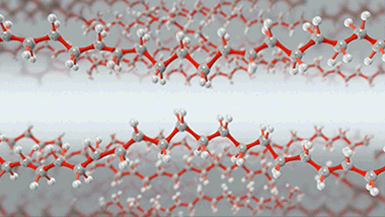
Source: www.herrmannultraschall.com
Ultrasonic sealing used sound vibrations to seal pouches and types of flexible packaging. It is increasingly becoming a preferred alternative for heat sealing. This is because it produces tight seals and can produce a more elegant end-result given as it uses low heat. So, how does sound seal a stand-up pouch?
An ultrasonic sealing machine comprises 4 main parts; a horn, a booster, a converter, and a vibrating tool. They work as follows.
Electrical current is transmitted to the converter which changes it to mechanical vibrations
These vibrations are amplified by the booster
The horn then takes over and acts as a vibrating tool; it exerts mechanical vibrations on the space between the surfaces of the pouch that need to be sealed
The vibration activates molecules of the material causing friction. The friction produces some heat which causes both layers to melt and form a seal.
PROS
Ultrasonic seals are effective and present no risk of product contamination from products that form residues when heated
There is a lower risk of heat incidences in the production space
An ultrasonic seal can be completed fast which in turn cuts down production times
The lower use of heat makes this method more energy-efficient than conventional heat sealing
It is safer for sealing products that show composition would be altered by heat processes or are flammable like motor oil lubricants
CONS
The initial costs of acquiring and setting up an ultrasonic sealing machine are rather high
The low hum of ultrasonic vibration produced by ultrasonic sealing machines can be distracting and uncomfortable for factory workers
Sealing Accessories
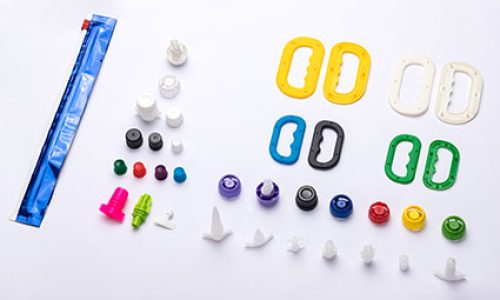
Sealing accessories refer to closure methods that are placed at the mouth of a stand-up pouch. They, however, involve two processes of sealing. First, all edges of the pouch are sealed leaving only the area where the closure device is to be added. When the closure device is placed, it is then heat-sealed onto the surface of the stand-up pouch.
You can have your stand-up pouches customized with sealing accessories such as:
Spouts for beverages
Press-to-close zippers
Zip locks
Caps
Why are Adhesives Not Preferred for Sealing Stand-up Pouches?

Source: Pixabay
Adhesives refer to products such as glue that cause two or more surfaces to stick to each other. They are used in almost all industries including furniture assembly and the shoe industry. Which begs the question, why are adhesives not preferred for stand-pouch sealing?
Adhesives are unsuitable for packaging because:
They pose a risk of contamination- applying the adhesive could result in it dripping into the stand-up pouch and adulterating the product. Moreover, non-liquid adhesives would form a chemical seal that would be in constant contact with the product which is not permissible especially in food product packaging.
Adhesive seals are not leakproof- the seal formed by adhesives are may hold the walls of a stand-up pouch together but they are often porous and can result in leakages
Adhesive seals are temperature-sensitive – heat or extreme cold affects adhesive seals. It can make them loosen up or become brittle enough to crack.
Adhesive seals offer only short-term longevity– adhesives expire over time while others become less powerful. They would be a poor choice for products that could have a long shelf-life.
Lack or resealability- if an adhesive is used to seal the access opening of a stand-up pouch, there is no chance of it being revealed once it is opened even if it is food-grade glue.
Factors That Affect the Choice of Sealing Method Used on Stand-up Pouches
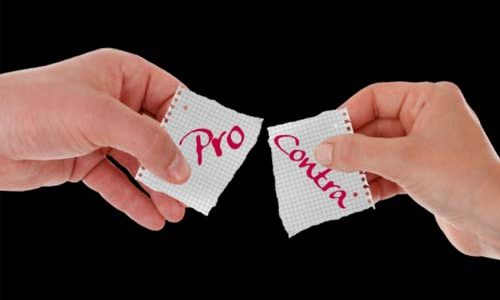
Source: Pixabay
Stand-up pouches are not all sealed in the same way. The type of method used is determined by factors such as:
The material of the stand-up pouch- some materials handle heat sealing better than they would handle ultrasonic sealing. Some are even restricted to particular heat sealing methods than others. This is therefore always an important factor to consider.
The product in the pouch- some products can be affected by heat while others would work better with a spout than a ziplock. The product composition and state(liquid or solid) thus influence the type of seal or closure used.
The level of barrier that is required– products that require a long shelf-life or are sensitive to light and oxygen require tight seals. In such a case, heat sealing with a tear notch might be more preferable to a closure.
Conclusion
It is fundamental that your stand-up pouches are leak-proof and maintain a product’s integrity for its entire shelf-life. To this end, it is advisable that you seek out a reputable stand-up pouch manufacturer that can offer you quality pouches. However, part of the sealing happens after product packaging. It is, therefore, essential that you understand what sealing methods would be ideal for your product. This list should start you off on the right path.

